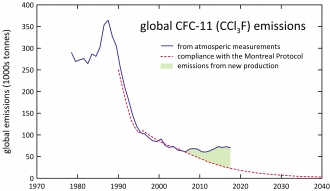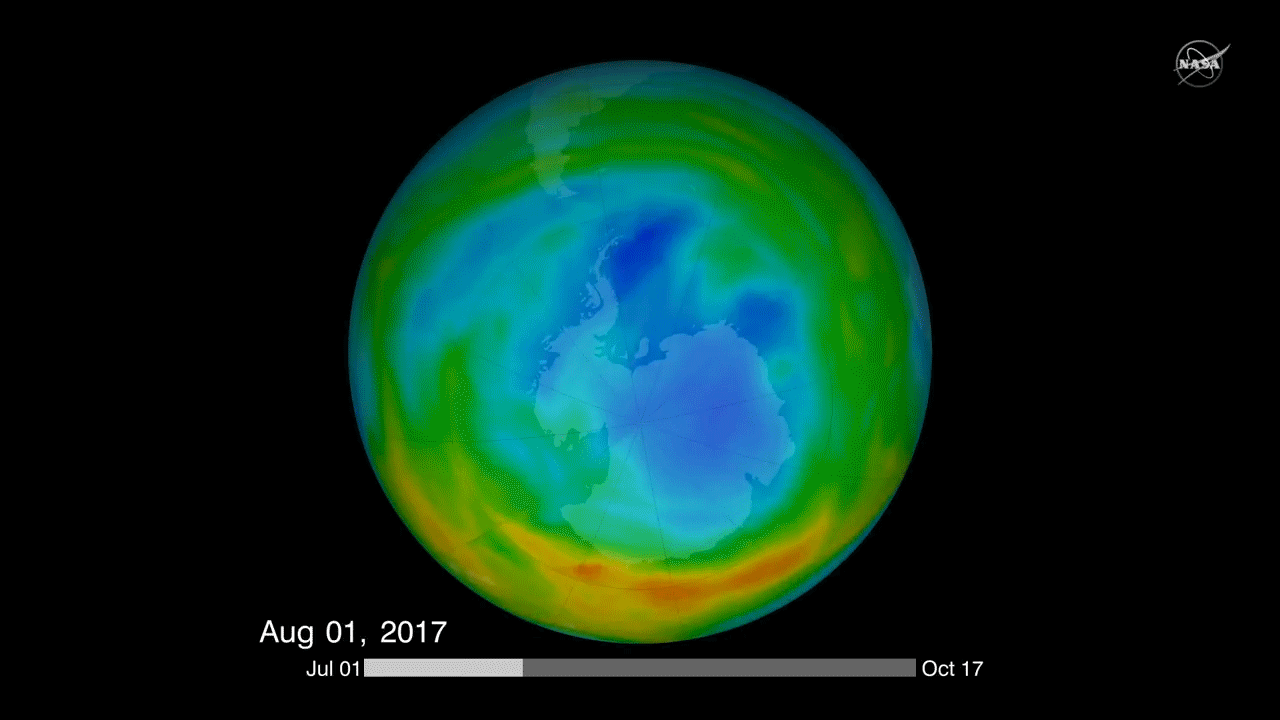Media release
From:
Environmental science: Location of increasing CFC-11 emissions identified
Emissions from eastern mainland China account for at least 40–60% of the global rise in trichlorofluoromethane (CFC-11) emissions since 2013, according to a study published in Nature this week. This rise is likely to be the result of new production and use, which is contrary to the Montreal Protocol agreement to globally phase out CFC production by 2010.
The concentration of CFC-11 in the atmosphere has declined substantially since the mid-1990s. However, last year it was reported that there has been a slowdown in this decline since 2012. It was suggested that global CFC-11 emissions have increased, but the locations of the sources responsible for this rise had not been identified.
Sunyoung Park, Matt Rigby and colleagues combined atmospheric observations from Gosan, South Korea, and Hateruma, Japan, with global monitoring data and atmospheric chemical transport models to investigate the source of the increase. The authors report that CFC-11 emissions from eastern mainland China were approximately 7,000,000 kilograms per year higher between 2014 and 2017 than 2008–2012. They show that the increase in emissions arises primarily around the northeastern provinces of Shandong and Hebei, and that these emissions are probably the result of new, unreported production and use.
Further investigations will be needed to determine the processes that have led to the increase and the magnitude of any associated CFC-11 production.
Expert Reaction
These comments have been collated by the Science Media Centre to provide a variety of expert perspectives on this issue. Feel free to use these quotes in your stories. Views expressed are the personal opinions of the experts named. They do not represent the views of the SMC or any other organisation unless specifically stated.
Professor Ian Rae is an expert on chemicals in the environment from the School of Chemistry at the University of Melbourne. He was also an advisor to the United Nations Environment Programme on chemicals in the environment and is former President of the Royal Australian Chemical Institute
CFC-11 is a chlorofluorocarbon (chemical formula CFCl3) that is very stable in the lower atmosphere but rises to the stratosphere, 30 km or so above Earth's surface, where it is smashed up by radiation. The resulting chlorine atoms cause destruction of ozone molecules (O3) in the ozone layer that stops dangerous ultraviolet radiation reaching Earth's surface and impacting on us and other species.
CFC-11 was mainly used in 'foam blowing' - that is, the process of producing the voids in plastic foams.
Under the Montreal Protocol on substances that deplete the ozone layer, production and consumption of CFC-11 was phased out by January 1996 in developed countries, and January 2010 in developing countries, of which China is the largest. CFC-11 is still leaking out of old foams, but atmospheric concentrations have been declining.
Because it's very effective at what it does, however, there have been rogue users of old supplies and rogue producers who flout international agreements that their governments have signed up to.
Regulated production and uses of ozone-depleting substances in China, for example, have been phased out with assistance from the multinational fund that developed countries have provided. However, regulators like China EPA and some in other countries have found it difficult to deal with the rogues.
Among the authors of this international study is Dr Paul Fraser, an Australian scientist who has spent many decades studying these industrial gases that have become minor but important constituents of our atmosphere.
Mr Paul Krummel is Research Group Leader, Atmospheric Composition and Chemistry at the Climate Science Centre, CSIRO Oceans and Atmosphere. He is an author on the research paper
In Australia, CFC-11 levels are monitored at the Cape Grim Baseline Air Pollution Station in Tasmania. This data was key to deriving the global CFC-11 emissions and shows that Australian emissions, likely from old insulating foams, are not contributing to the global increase in CFC-11 emissions.
This study highlights the importance of undertaking long-term measurements of trace gases like CFC-11 to verify the efficacy of international protocols and treaties.
Dr Paul Fraser is an Honorary Fellow at the Climate Science Centre, CSIRO Oceans and Atmosphere. He is an author on the research paper.
This research identifies the major source region for new CFC-11 emissions as eastern mainland China, likely due to the new production of insulating foams used in buildings, which is not permitted under the Montreal Protocol.
Increased emissions of CFC-11 are of concern because it is a powerful ozone-depleting chemical. If emissions do not decline, it will delay the recovery of the Antarctic ozone hole, possibly for decades.
Multimedia









 Australia; International
Australia; International



